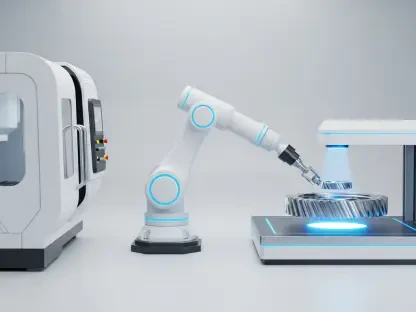The advent of 3D printing technology is making significant strides in healthcare by revolutionizing the design, production, and application of medical devices. Bridging the gap between traditional manufacturing methods and innovative solutions, 3D printing is ushering in a new era of personalized medicine. This technological evolution addresses the limitations of mass-produced devices by offering customized options that enhance patient outcomes. This article delves into the impact of 3D printing in the realm of medical equipment, with a focus on the key areas of personalized medicine, rapid prototyping, complex geometries, and regulatory considerations.
Personalized Medicine
Custom Medical Devices
3D printing is paving the way for personalized medicine by enabling the creation of custom medical devices tailored to individual patients. Traditional medical devices are often mass-produced, which means they may not provide the best fit or functionality for every patient. However, 3D printing can produce patient-specific devices such as orthopedic implants that offer an improved fit and effectiveness, leading to better patient outcomes. These custom implants are designed based on the patient’s unique anatomy, thereby reducing complications and enhancing overall satisfaction with the treatment.
Patients requiring complex surgeries, such as joint replacement or cranial reconstruction, greatly benefit from these precision-engineered solutions. For example, orthopedic implants created through 3D printing can significantly reduce recovery time and improve mobility, as they are designed to mesh perfectly with the patient’s bone structure. Furthermore, this technology enables the production of devices that can be quickly adjusted in response to a patient’s evolving medical needs, thus providing a dynamic approach to medical treatment.
Enhanced Patient Outcomes
The ability to create tailored medical devices directly contributes to enhancing patient outcomes and satisfaction. Devices such as patient-specific cardiovascular stents and dental implants, which are difficult to produce using traditional methods, can now be manufactured with ease and precision through 3D printing. This customization not only ensures a better fit but also extends the lifespan and effectiveness of the device. The improved fit reduces the risk of complications such as device rejection or infection, which can lead to shorter hospital stays and a quicker return to everyday activities for patients.
Beyond implants, 3D printing is also being used to create personalized surgical instruments. These custom tools can make surgeries more efficient and less invasive, thereby reducing the time patients spend under anesthesia and decreasing recovery times. In pediatric care, for instance, surgical guides specifically designed for a child’s anatomy can greatly enhance the precision of delicate procedures. The overall impact of such personalized approaches is the elevation of the standard of care, with a more individualized and responsive treatment process.
Rapid Prototyping and Iterative Design
Accelerating Device Development
One of the most transformative aspects of 3D printing in medical equipment manufacturing is its ability to accelerate device development through rapid prototyping and iterative design. Traditional processes often involve lengthy and costly development cycles, with multiple rounds of design iterations and extensive testing phases. In contrast, 3D printing allows for the quick production and refinement of prototypes, significantly shortening the time from concept to market. This capability is particularly beneficial for complex devices like surgical instruments and implantable devices, where innovation and precision are paramount.
By enabling rapid prototyping, 3D printing fosters a more agile development environment. Medical device manufacturers can quickly produce and test multiple iterations of a design, gathering critical feedback and making necessary adjustments in a fraction of the time required by traditional methods. This not only enhances the device’s functionality and performance but also reduces overall development costs. Moreover, early detection of design flaws through rapid prototyping can prevent costly errors and ensure that only the most effective versions reach production.
Cost-Effective Innovation
In the competitive medical device industry, cost-effective innovation is essential for staying ahead. 3D printing facilitates this by allowing companies to experiment with new designs and materials without significant financial risk. The ability to rapidly iterate and refine prototypes means that manufacturers can explore innovative concepts and bring more advanced devices to market more quickly and cost-effectively. This process democratizes innovation, making it accessible even to smaller companies and startups that might otherwise struggle with the high costs and resource demands of traditional manufacturing.
Moreover, 3D printing supports the development of multifunctional devices by integrating various materials into a single prototype. This capability opens up new possibilities for creating surgical instruments with embedded sensors or drug delivery systems. By reducing the need for multiple assembly steps, 3D printing minimizes the risk of errors and increases the reliability of the final product. For healthcare providers and patients, this means access to more sophisticated and effective medical technologies, ultimately improving the standard of care.
Complex Geometries and Enhanced Functionalities
Intricate Device Designs
Another groundbreaking feature of 3D printing in medical equipment manufacturing is its ability to create complex geometries and intricate designs that are challenging or impossible to achieve with traditional methods. This capability is revolutionizing the production of medical devices such as cardiovascular stents and dental implants. With 3D printing, these devices can be manufactured with enhanced surface textures and complex internal structures, improving their performance and longevity. This precision allows for the creation of highly effective medical solutions that are tailored to meet specific clinical needs.
For instance, patient-specific cardiovascular stents manufactured using 3D printing can be customized to fit perfectly within a patient’s vascular system. This customization minimizes the risk of complications such as blood clots or stent migration, thereby improving the overall efficacy of the treatment. Similarly, dental implants with intricate surface textures can promote better integration with the patient’s bone, ensuring a more secure and durable solution. The ability to produce such detailed and precise devices is a significant advancement in medical technology.
Multifunctional Device Integration
3D printing also enables the integration of multiple materials into a single device, paving the way for multifunctional device designs. This is particularly beneficial for creating devices with embedded sensors or drug delivery systems. The integration of different materials and functionalities into one seamless component can improve the efficiency and effectiveness of medical treatments. For example, a single 3D-printed device could monitor a patient’s vital signs while simultaneously delivering medication, reducing the need for multiple separate devices and procedures.
The potential of 3D printing to revolutionize medical equipment extends beyond merely producing innovative designs. It also simplifies production processes and improves the reliability and consistency of medical devices. By combining various functions into one device, healthcare providers can streamline patient care and enhance the overall treatment experience. This technological advancement not only elevates the quality of medical care but also drives the industry towards more patient-centered and efficient solutions.
Regulatory Considerations and Quality Assurance
Ensuring Safety and Efficacy
Despite the numerous advantages of 3D printing in medical equipment manufacturing, it is crucial to address regulatory considerations and quality assurance to ensure the safety and efficacy of these devices. Regulatory entities like the FDA are actively developing guidelines to oversee the production and application of 3D-printed medical devices. These guidelines are essential for maintaining high standards of biocompatibility, performance, and sterility. Manufacturers must implement rigorous quality assurance protocols and maintain thorough documentation to comply with regulatory standards.
Quality assurance in 3D printing involves extensive testing to validate the performance and safety of medical devices. This includes biocompatibility tests to ensure that the materials used do not cause adverse reactions in patients, as well as mechanical testing to verify that the devices can withstand the physical stresses they will encounter in the human body. Sterility is another critical factor, as any contamination during the manufacturing process can lead to severe infections or complications. Manufacturers must establish robust protocols to monitor and control every aspect of the production process, from material selection to final inspection.
Maintaining Regulatory Compliance
The rise of 3D printing technology is significantly transforming healthcare by revolutionizing the design, creation, and use of medical devices. Bridging the gap between traditional manufacturing approaches and innovative solutions, 3D printing introduces a new era of personalized medicine. This cutting-edge technology addresses the limitations of mass-produced medical equipment by offering customized alternatives that greatly enhance patient outcomes. By enabling the design and rapid prototyping of medical devices, 3D printing allows for the creation of complex geometries that are tailored to individual patient needs. Moreover, it accelerates the development process, making it faster and more efficient. However, the integration of 3D printing into healthcare also raises important regulatory considerations. Ensuring the safety, efficacy, and quality of 3D-printed medical devices necessitates rigorous testing and oversight. This article explores the profound impact of 3D printing on medical equipment, focusing on its contributions to personalized medicine, the pace of innovation through rapid prototyping, and the challenges posed by regulatory requirements.









